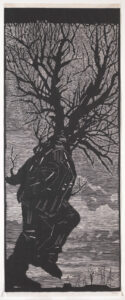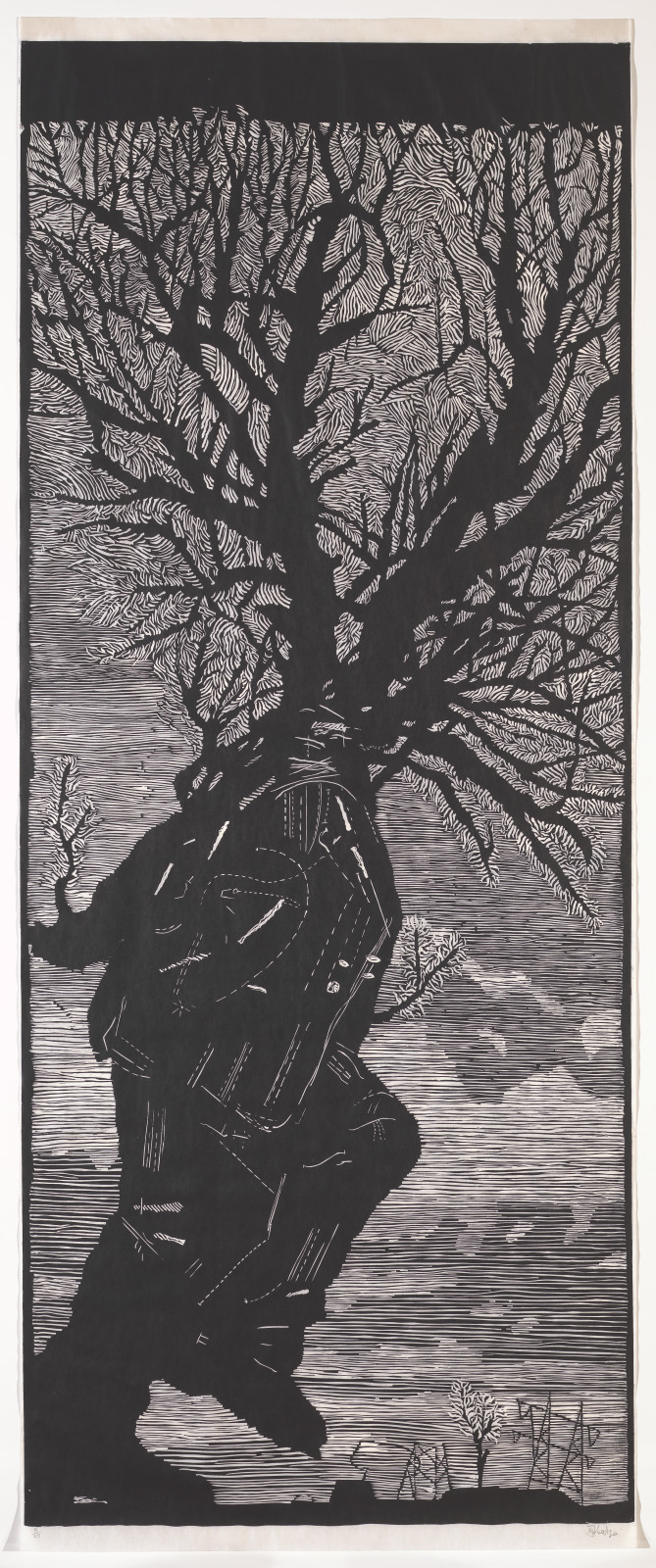
Creative Expressions: Prompts for Extended Thinking
Use these prompts after your Evans Distance Learning Program (Evans DLP) session or museum visit to activate creative, critical, and reflective thinking.
Creative Thinking
Using our imaginations when looking at art can spark curiosity and stimulate creative responses to the world around us. Sometimes artworks feature objects or environments in new and thought-provoking combinations. These can serve as a prompt for imagining new worlds or scenarios.
Recall your Distance Learning session and challenge students to imaginatively explore this work through Observational Poetry.
Artist William Kentridge is known internationally for handmade animated films based on his charcoal drawings. He has also made prints since the beginning of his career and this one, made in 2000, is a large linocut print measuring about 8 feet tall. It features a large striding figure in a barren industrial landscape that is similar to the outskirts of Kentridge’s native Johannesburg, South Africa. The artist has offered few clues about the figure’s race or social status, although the branches sprouting from the man’s head and hands may call to mind ideas about transformation.
Use these prompts to guide student engagement with the artwork:
- Take some time to look closely at the artwork, allowing your eyes to wander and consider every aspect.
- Make a list of 10 words that come to mind as you do so. They may be words that describe what you are seeing, emotions, or things the artwork reminds you of. Restrict your list simply to words rather than phrases.
- Next, think about the idea of transformation and what it means to you. Look again at this artwork, and imagine if this figure were to continue transforming. See if you can add 10 more words to your list with these ideas in mind.
- Using as many words from your list as you like, write a poem inspired by this artwork. The poem can be any form you like – haiku, rhyming couplet, free verse – it’s completely up to you!
Reflective Thinking
Reflecting on our experience with art helps us connect to people and ideas across time and place. Ask students to reflect on their Evans Distance Learning session with one or more of the following prompts.
- Having spent time with art at VMFA, what more do you know about how artists make choices about imagery, materials, and methods to visually convey and stimulate ideas?
- What did the art NOT answer for you? What aspects of creativity and art-making are you curious about? Name three things that you wish you knew more about and why. Visit your school library and online databases to research answers.
- Imagine you could visit the studio or workshop of an artist whose work you saw today. Based on what you have seen, what would you expect it to be like? What kinds of tools might be there? What kinds of conversations might you overhear? What about YOU and where you work would surprise or intrigue the artist?





